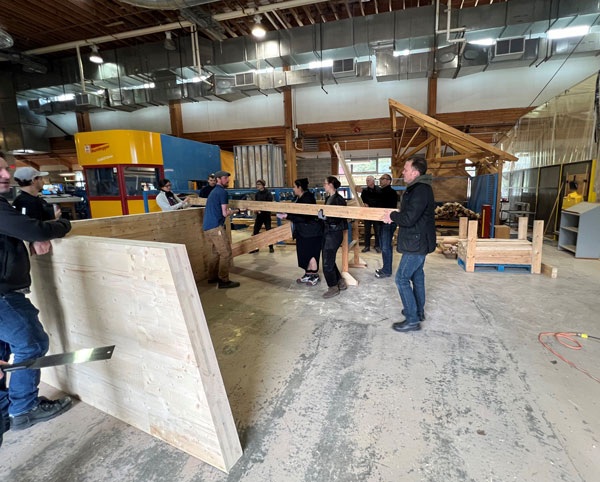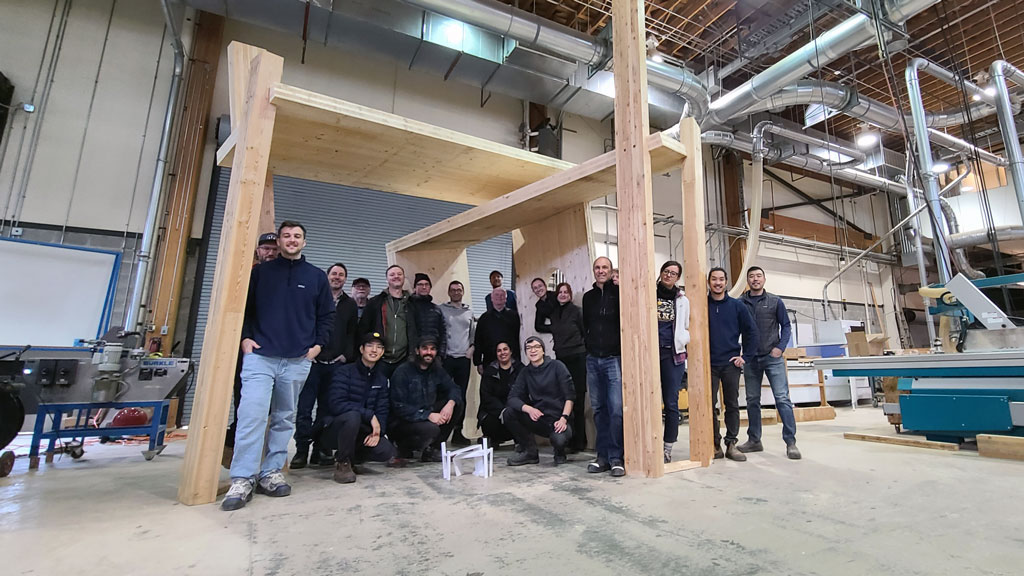While mass timber construction continues to build on its successes, the still-fledgling industry is not without growing pains.
There still are knowledge gaps, for example, between the architects, engineers, manufacturers and builders that can present obstacles to achieving the best building possible.
But many of those obstacles can be overcome through an approach called Design for Manufacture and Assembly (DFMA) which aims to get all disciplines on the same page early in the project.
“It is a new way of doing construction that involves integration of all of those elements (design through construction) to make a successful project,” says AnnaLisa Meyboom.
Meyboom was an instructor for a recent three-day workshop on DFMA held at the University of British Columbia’s Centre for Advanced Wood Processing (CAWP).

DFMA combines design for ease of manufacture with design for ease of assembly. It allows creative input from all the stakeholders on a project to improve the final product, she says, adding all parties have not typically worked together in the past.
Fifteen participants from the four disciplines attended the CAWP workshop where they designed, fabricated and built a mockup of a pavilion using cross-laminated timber and glulam beams.
The course included a design-build exercise using CAD/CAM software for the design and manufacture of components.
It emphasized the importance of data flow (translation of modelling to fabrication data) to connect all the dots between the parties, Meyboom says.
The architecture, engineering and design reviews are done at the same time, she says.
“As they are doing the design, discussion might be on whether it has the capacity to resist the lateral load, whether the connections will work.”

The three-day event included a list of speakers with experience in the field, including an engineer and fabricator, Meyboom says.
One key to a mass timber project’s success is for all the players to understand the risks faced and how to manage them.
“It requires a lot more planning than people are familiar with,” the instructor points out. “When contractors are unfamiliar with it, they add costs which can make the buildings unfeasible.”
Meyboom says mass timber projects in B.C. typically are comprised of the same team of players (architect, engineer, fabricator and contractor) over and over.
“It is really that integration of a team which is becoming necessary, but it is a very unusual framework for our industry which is so fragmented.”
It is the second year the CAWP has presented the course and Meyboom says it could be held again next year because it has garnered a lot of interest.
“Anyone who is interested in getting into the design or fabrication or construction of mass timber will benefit from it.”
The CAWP is the national centre for education, training and technical assistance for the wood products manufacturing industry. Along with offering training courses, product development and services for improving manufacturing processes, it also does research and development in the field.




Recent Comments
comments for this post are closed